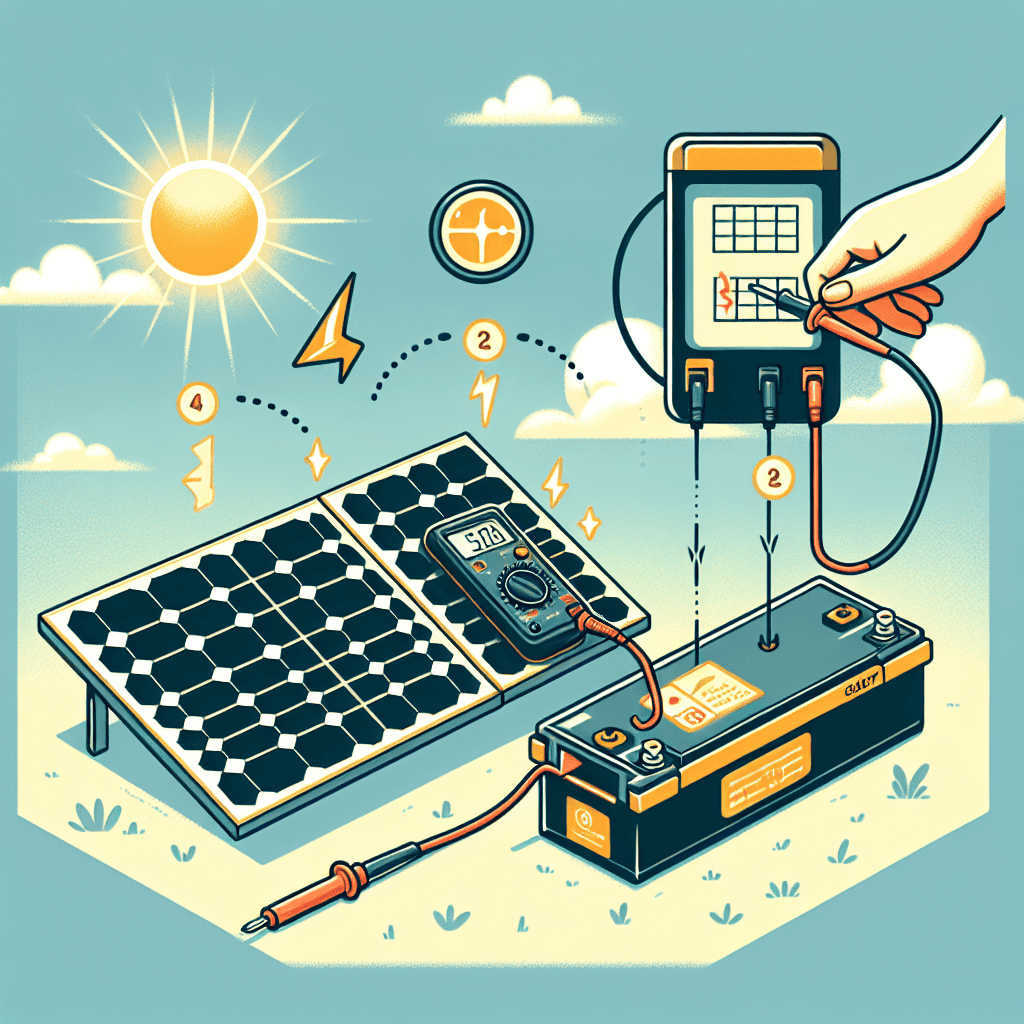Solar panels are a fantastic way to harness renewable energy, bringing both ecological and economic benefits. However, it’s crucial to ensure that your solar panel system is working efficiently by checking if it is charging your battery effectively. Here is an easy-to-understand guide on how to verify if your solar panel is charging the battery properly. We will cover the necessary steps and some important keywords related to solar panels and batteries to help optimize your search.

Understanding the Components
Before diving into the checking process, it’s essential to understand the key components of a solar power setup. A typical system includes solar panels, a charge controller, a battery, and an inverter. The solar panels convert sunlight into electricity, the charge controller regulates this power to charge the battery safely, and the inverter converts the stored power into usable electricity for your appliances.
Initial Visual Check
The first and simplest step is to perform a visual check. Make sure all connections between the solar panel and the battery are secure. Look for any visible damage to the panels, wiring, or connections which might impede charging. Also, ensure that the solar panel is positioned correctly to receive optimal sunlight.
Tools Needed for Testing
To accurately determine if your solar panel is charging the battery, you’ll need a multimeter and a charge controller with a built-in display if available. A multimeter can measure voltage and current, offering insights into the system’s charging performance.
Also Read: How to Make a Solar Panel with Aluminum Foil: A Simple Guide
Step-by-Step Guide to Test
Step 1: Measure the Voltage
- Disconnect the Solar Panel: Before using the multimeter, disconnect the solar panel from the system to safely measure open-circuit voltage.
- Set Up the Multimeter: Turn the multimeter to the voltage setting suitable for your solar panel system.
- Measure: Place the multimeter’s probes on the solar panel’s positive and negative terminals. Ensure the voltage reading is close to the panel’s rated output, usually found in its specifications. If it’s significantly lower under good sunlight conditions, the panel may not be charging effectively.
Step 2: Check the Battery Voltage
- Check Without Load: Ensure the battery is not under load before testing.
- Measure: Place the multimeter’s probes on the battery terminals. A fully charged 12V battery, for example, should read around 12.6V. If the reading is lower, it indicates that the battery might not be receiving enough charge.
Step 3: Inspect the Charge Controller
- Review the Display: If your charge controller has a digital display, it should show input from the solar panel and output to the battery.
- Check LED Indicators: Most charge controllers have LEDs that indicate charge status. A green light usually signifies charging is happening, while a red or blinking light could indicate problems.
Troubleshooting Common Issues
If the voltage readings are off or the indicators show issues, consider these troubleshooting tips:
- Clean the Solar Panels: Dust and grime can significantly reduce efficiency.
- Inspect for Shading: Trees, buildings, or other obstructions can block sunlight.
- Check for Loose Connections: Ensure all wires and components are securely connected.
- Test the Battery Health: If the battery is old or damaged, it might not hold a charge well.
Importance of Regular Maintenance
To ensure long-term efficiency, regularly clean your solar panels and check connections. Monitor system logs from the charge controller to identify any ongoing issues early.
Conclusion
Ensuring your solar panel is charging the battery effectively is crucial for optimal performance and longevity of your renewable energy system. Through simple visual inspections, utilizing a multimeter, and understanding charge controller displays, you can verify charging status accurately. Remember, regular maintenance and checks can prevent potential problems and ensure you continue to benefit from sustainable, eco-friendly energy.
By following these steps, you’ll be empowered to maintain your solar panel system effectively, both saving money and reducing your environmental footprint, all in a straightforward, efficient manner.